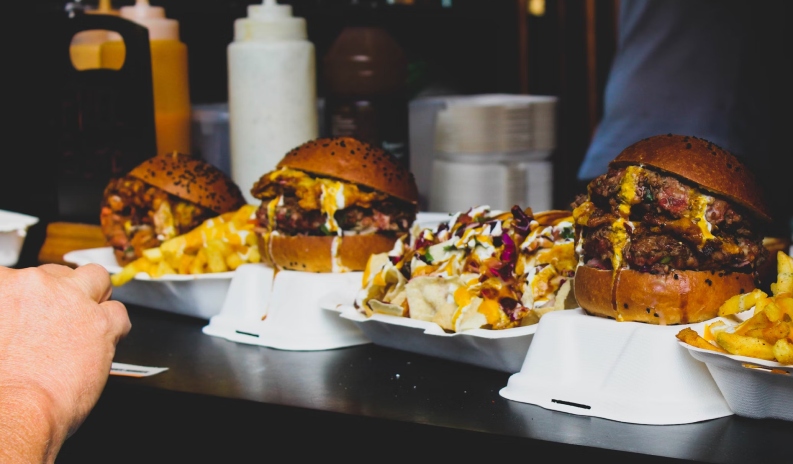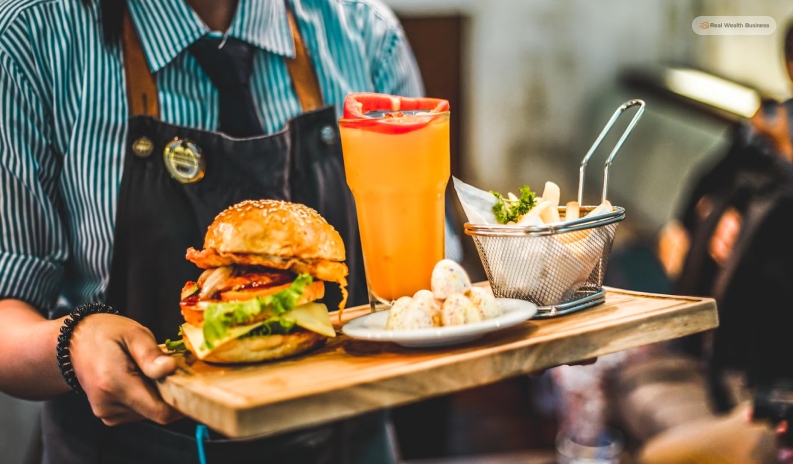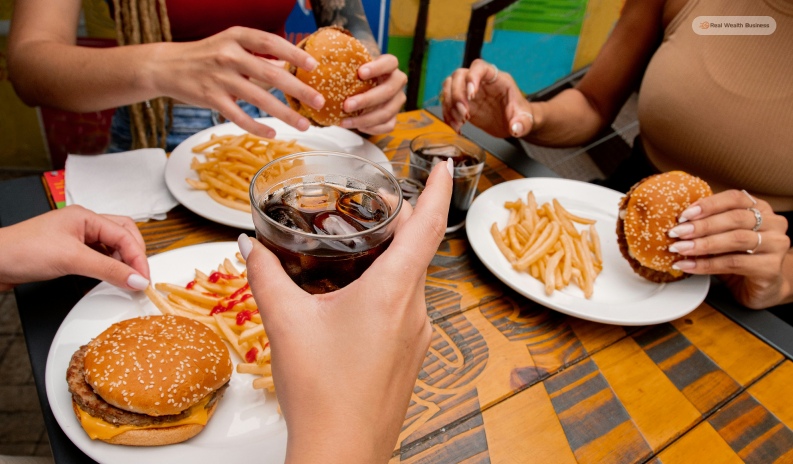The Evolution of Fast Food Chains: A Historical Perspective on America’s Favorite Eateries
by Ankita Tripathy Business 09 April 2024

Coming from a family where home-cooked meals were the make or break of my relationship, it was a massive shock to me when I had to move out to build my career. That is where I had to make civil amends with the fast food stalls to satiate my hunger, which drove me crazy in the scorching heat of May. Let’s find out about fast food history in USA.
That is when I started falling in love with the idea of fast food. I started trying to understand why people would leave their comforting home-cooked meals and hop into the fast food chains of the world.
Something that was never there in history, where did fast food come from? What was so special about them? Was I missing out on something that I had no clue about? Well, I found my answer very soon.
Wondering what it was? For that, you must read this blog till the end.
Read More: Fast Food Marketing Strategies: How Chains Use Advertising to Attract?
Fast Food History: Is it the Taste of Time?

Just as the name suggests, fast food is something that you can have on the go. It is also something that takes comparatively less time to prepare and serve. And yes, if you compare it with a good meal at some fancy restaurant, fast food is inexpensive.
For instance, when I had nearly $6 in my purse and I was wondering how to keep myself full, getting a plate of burgers and fries was something that I could think of without much struggle.
I am not the only one in this case. I am pretty sure that a lot of us have gone through something very similar.
While the name “fast food” was coined in the 1950s and recognized by Merriam-Webster in 1951, it has been around for a long time.
For example, White Castle started selling hamburgers in the first half of the 20th century(1920s). They were helping get rid of hunger with delicious meals for as low as five cents. Additionally, they wanted to ensure that the customers could see their food being prepared.
But is that all? Well, absolutely not! If you are wondering about the history of fast food or the popular chains of the world, you have reached the right place. Here is everything that you need to know about:
Ancient Times and Fast Food

As I have mentioned before, the idea of fast food dates to a time we do not know about. Apparently, in Ancient Rome, street vendors used to sell creads that were soaked in wine and cooked with many vegetables. It was, in a way, a stew. It kept people full and was tasty and inexpensive.
Now tell me something: Would you not consider that as fast food?
Additionally, you will be shocked if I tell you how archaeologists have been studying a thermopolium at the site of Pompeii. These were structuring that kind of served like an ancient fast food restaurant.
According to sources, many Roman families were poor and could not afford to have kitchens in their houses. This is the reason why there was a prevalence of several such thermopolium.
This is just one of the many examples.
Fast Food Chains in Modern Times

But times have changed now. Unlike in ancient times, people from all sections of society enjoy having a snack or a full-blown meal at the fast food chains.
For instance, I have always found it surprising how my friends from university use the phrase “let’s grab a sub” so easily. Why? Can’t they just make a sandwich at home? Is it THAT convenient for them?
Then it struck me. Yes. It is all about the convenience of it all.
Most people do not have the time to cook their meals in modern times, which is why the QSR industry has risen. That is why fast food has also become a part of the American dining trends.
Evolution of Fast Food Restaurants

Fast-food chains have seen a tremendous transformation from the past to the present. Early fast-food restaurants were typically little cafes or street sellers offering rapid, ready-to-eat food.
In the 1920s, chains like White Castle introduced standardized menus and speedy service, which created the idea of fast food as we know it today.
However, the real fast food boom occurred after World War II.
Drive-ins and drive-thrust became increasingly popular due, among other things, to the building of roads and the emergence of car culture.
Fast food consumption has increased worldwide and has become associated with the American way of life.
On the other hand, today’s fast food sector has changed to satisfy shifting consumer needs. More focus is being placed on sustainability, healthier options, and a varied menu.
The industry has also changed due to technology, with the commonplace online ordering and delivery services.
The convenience and dependability of fast food remain its primary drawers, notwithstanding these modifications.
Rise of Popular Fast Food Chains

As I have already mentioned earlier, fast food chains have gained worldwide popularity due to their quick service and convenient on-the-go meal options.
Fast food is popular because it’s quick and convenient for individuals who work long hours and live in cities. While spending on eating out has increased, fast food is frequently less expensive than alternative options.
Additionally, as American TV series and films have gained international appeal, individuals in other nations have been consuming more fast food in line with what they see in the media.
In addition, modern technology allows you to order meals from your phone and deliver them to your home. This feature gained much traction when the epidemic struck, and people could not go out to eat.
All these factors mean more and more people are eating fast food, which will not change anytime soon.
Impact of Fast Food on Society

While it is true that the growth of fast food chains has been remarkable, there is one thing that people like you and me often tend to forget. Or, how should I put it, do not pay much heed to it?
And these are the potential side effects (both negative and positive) of conveniently choosing fast food over regular home-cooked meals.
One of the major influences of fast food on society’s culture is that the people who eat it are no longer involved with the entire food preparation process. They do not know what is going in their food and on their bodies.
Considering that life is getting increasingly busy, people do not have the chance to spend time with their family in the kitchen, sharing a meal or two. And “grabbing a sub” does not help build the bonds.
These are just some of the many cultural influences that have raised the popularity of fast food in the world. But these are not all.
You see, the growth/rise in popularity of fast-food chains is directly proportional to that of health concerns.
How Can We Forget the Health Concerns of Fast Food?

That’s right!
While fast food is tasty and convenient, it is not the best thing you can do for your body.
All forms of fast food are loaded with calories, salt, sugar, and other unhealthy fats, including trans and saturated fats, which can lead to various health issues.
If you overindulge in fast food, you may have experienced that sometimes you are too energized and other times you are just dead. This is because when you eat a lot of fast food, your blood sugar levels can spike and then crash rapidly.
Additionally, it can promote inflammation and raise blood pressure, both of which are detrimental to the heart and, in certain cases, can precipitate asthma attacks.
If you eat a lot of fast food, you cannot get enough of these healthful meals because fast food typically lacks fresh fruits and vegetables.
This means you might be depriving yourself of vital nutrients and fiber supporting optimal bodily function.
Eating fast food frequently might increase your risk of developing major health conditions. These can include type 2 diabetes, headaches, weight gain, and even mental health conditions like depression.
Read More: The Fusion Of Artistry And Functionality In Restaurant Chairs
Wrapping It Up!
In conclusion, there is only one thing that I want to say. I have really fallen in love with fast food, and more so because of its history. Fast food that we know today has evolved from being food for the poor to something convenient. It has become a source through which people from all sections of society can bond.
However, as studies suggest, these can negatively affect health. Therefore, perhaps it falls on our shoulders to understand where we must control our craving for fast food. As the saying goes, too much of a good thing is also not good. I hope this blog has helped you learn about the history of fast food. If you have any questions related to this, please tell me. Scroll down until you reach the bottom of the page. Then, leave your comments and queries in the box below. I will be there to answer them all.
For More Business Related Articles Click Below!!



































































































